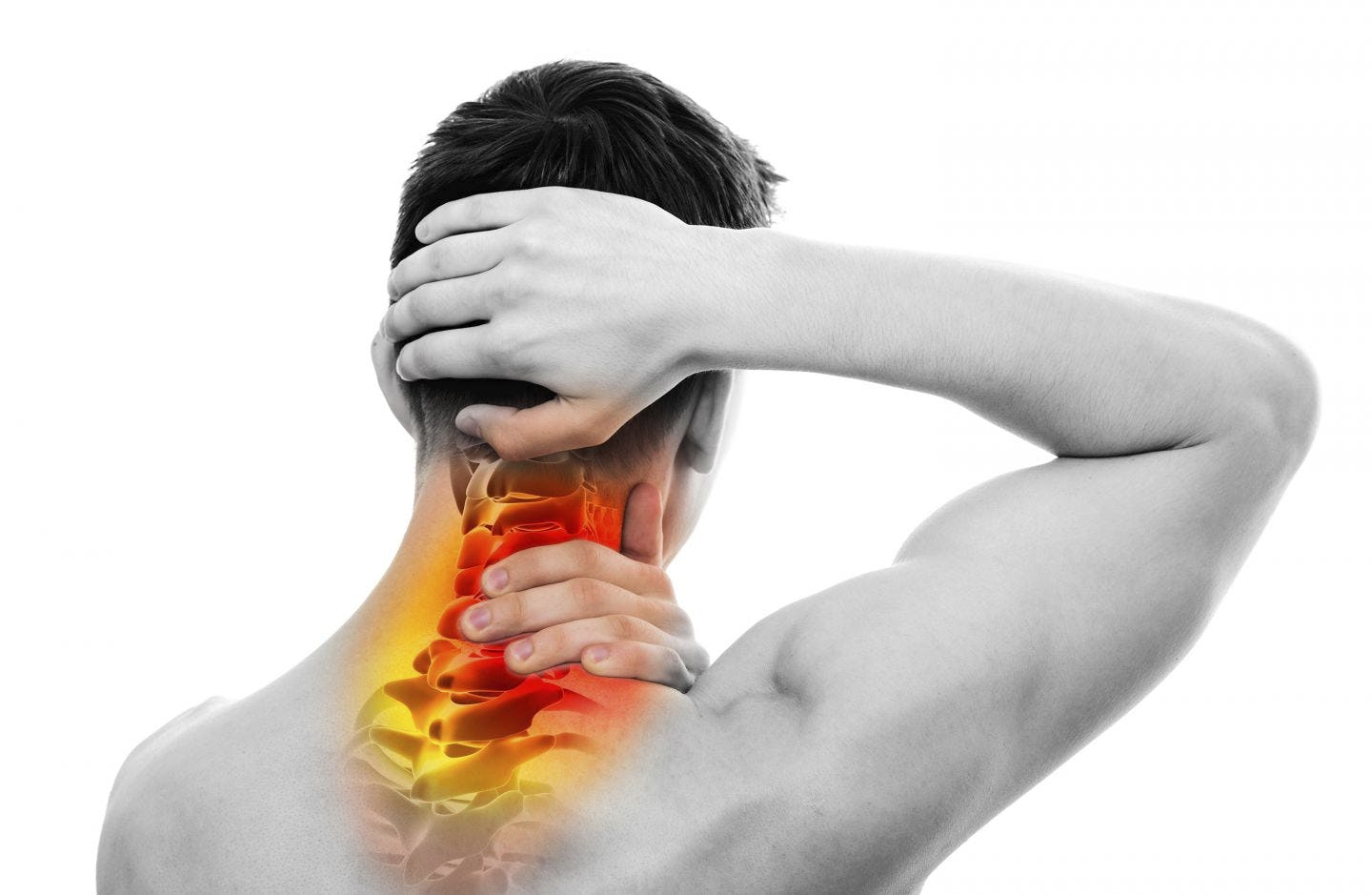Neck Pain
Physical therapists (PTs) are experts in the art and science of the evaluation and treatment of human movement dysfunctions. We care for people of all ages and treat a variety of muscle, joint and neurological conditions.
Conditions we have successfully treated:
- Whiplash
- Acute Pain
- Sprains/Strains
- Chronic neck pain*
- Arthritis (spondylosis)
- Post Surgical Fusion
- Degenerative Disc Disease
- Pinched Nerves (Radiculopathy)
What are my treatment options?
- Drugs
- Surgery
- Epidural Injections
- Physical Therapy*
Advantages of Physical Therapy:
- No side effects.
- Cost-effective.
- Supported by clinical research*.
- Customized to treat the underlying cause.
Your Recovery Process:
- Pain relief is priority number one.
- Recovery of any lost neck motion.
- Neck stabilization techniques
- Recovery of functional movement.
- Independent care.
Components of Your Care:
- A thorough biomechanical evaluation.
- Extensive patient education.
- A customized treatment plan.
- Gentle hands-on techniques to relax the muscles.
- Effective joint mobilization techniques to decrease stiffness.
- Pain relieving modalities such as ice, heat, ultrasound or electrical stimulation.
- Dynamic or static neck traction.
- Targeted stretching for tight muscles.
- Individualized posture retraining.
- Core neck stabilization techniques.
Everyone is different. You may require one or two visits, or an extended care plan over several weeks or months. If you’re ready for relief, and tired of “masking” your pain, treat the cause, not just the symptoms!
* Cited from the academic journal, Cochrane Database of Systematic Reviews 2004.
Temporomandibular Disorders (TMD)
Temporomandibular disorder (TMD), is a term that describes an entire group of disorders involving the temporomandibular joint or joints (TMJ).
The TMJs are the jaw joints. There is one on each side of your head just in front of your ear canals. Like many other joints in the body, they consist of:
- Muscles that control joint movement,
- Ligaments that hold the bones together,
- Cartilage that provides a smooth surface for the bones to move on,
- A disc that helps with proper movement, of the bones,
- Elastic tissue that helps hold the disc in place.
One or more of the above tissues can cause symptoms. In fact, studies suggest that one third of the population at any one time experiences TMJ symptoms such as pain with chewing, yawning, or jaw opening. Women seem to have TMJ problems much more often than men and it is estimated that 3-6% of the population might benefit from treatment.
There are a variety of temporomandibular disorders. The muscles (myogenous), joint(s) (arthrogenous), or a combination of the two may cause pain.
Since physical therapists treat muscle and joint problems, they are ideally suited to address a TMD. Moreover, a majority of patients diagnosed with TMD, also have associated neck pain. Both respond well to treatment provided by a physical therapist. No other healthcare practitioner is better suited to address both the TMD and neck pain.
TMD may appear to be a complex condition and it shouldn’t be. This website and your physical therapist can help to insure the following:
- You are properly educated,
- that your treatment is conservative, cost-effective, and reversible,
goals are realistic, - your examination is brief and meant to identify your source(s) of pain.
When a physical therapist performs the examination, they will be able to classify you as having one or more of the following:
- An inflammatory condition
- Limited jaw range of motion
- Excessive jaw range of motion
- Arthrogenous Disc Displacement
- Jaw muscle pain
- Neck pain causing related headaches (sometimes mistaken as TMD)
Once the involved structures are identified, the therapist will be able to provide you with the appropriate treatment.

